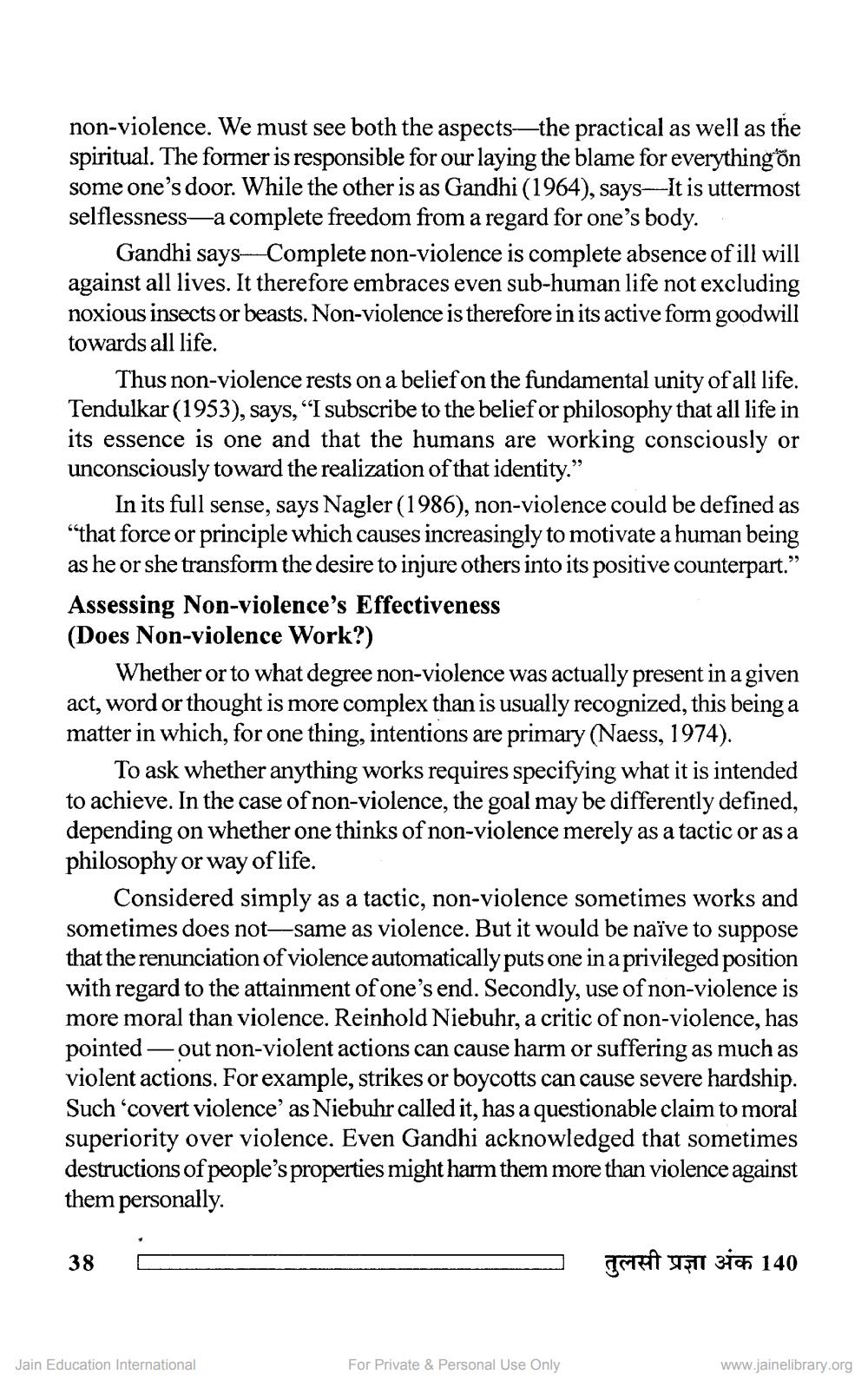________________
non-violence. We must see both the aspects—the practical as well as the spiritual. The former is responsible for our laying the blame for everything on some one's door. While the other is as Gandhi (1964), says-It is uttermost selflessness—a complete freedom from a regard for one's body..
Gandhi says—Complete non-violence is complete absence of ill will against all lives. It therefore embraces even sub-human life not excluding noxious insects or beasts. Non-violence is therefore in its active form goodwill towards all life.
Thus non-violence rests on a belief on the fundamental unity of all life. Tendulkar (1953), says, “I subscribe to the belief or philosophy that all life in its essence is one and that the humans are working consciously or unconsciously toward the realization of that identity."
In its full sense, says Nagler (1986), non-violence could be defined as "that force or principle which causes increasingly to motivate a human being as he or she transform the desire to injure others into its positive counterpart." Assessing Non-violence's Effectiveness (Does Non-violence Work?)
Whether or to what degree non-violence was actually present in a given act, word or thought is more complex than is usually recognized, this being a matter in which, for one thing, intentions are primary (Naess, 1974).
To ask whether anything works requires specifying what it is intended to achieve. In the case of non-violence, the goal may be differently defined, depending on whether one thinks of non-violence merely as a tactic or as a philosophy or way of life.
Considered simply as a tactic, non-violence sometimes works and sometimes does not-same as violence. But it would be naïve to suppose that the renunciation of violence automatically puts one in a privileged position with regard to the attainment of one's end. Secondly, use of non-violence is more moral than violence. Reinhold Niebuhr, a critic of non-violence, has pointed out non-violent actions can cause harm or suffering as much as violent actions. For example, strikes or boycotts can cause severe hardship. Such 'covert violence'as Niebuhr called it, has a questionable claim to moral superiority over violence. Even Gandhi acknowledged that sometimes destructions of people's properties might harm them more than violence against them personally.
38
0
-
Trot Tşi Bich 140
Jain Education International
For Private & Personal Use Only
www.jainelibrary.org




